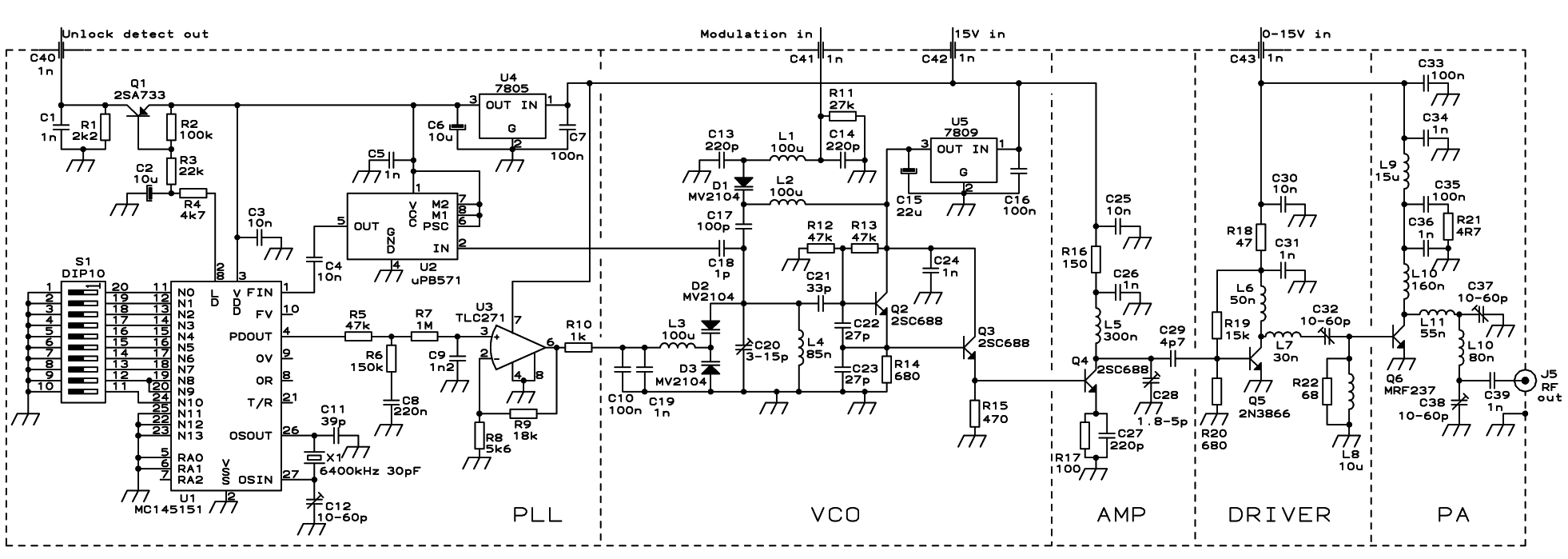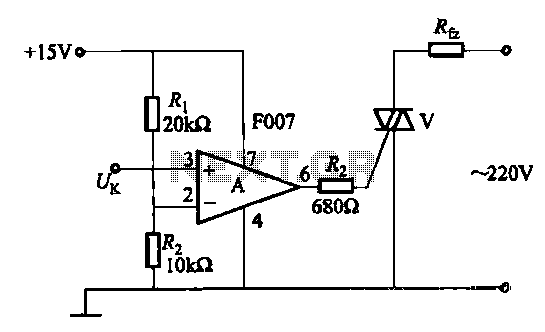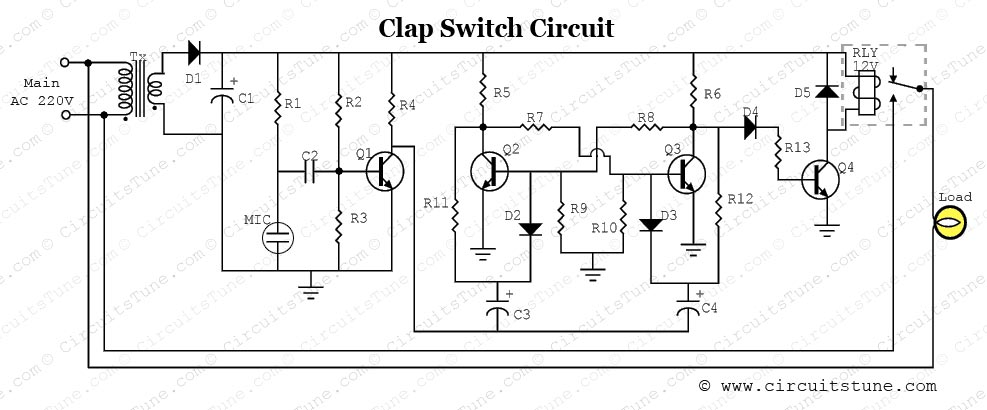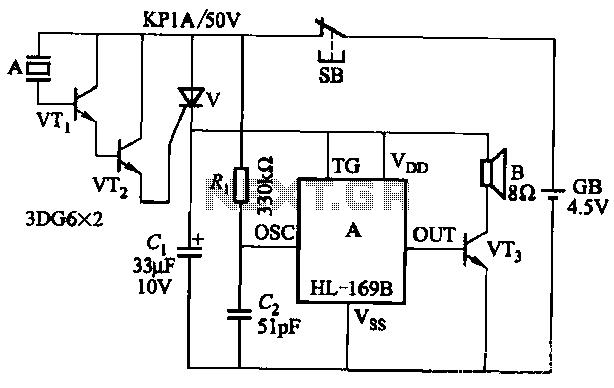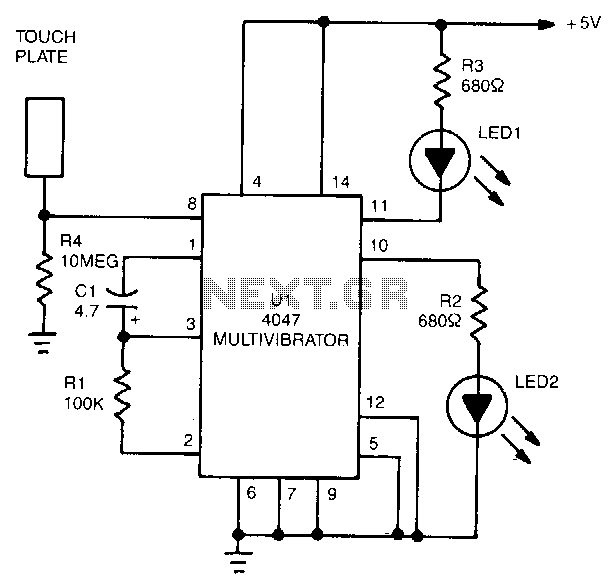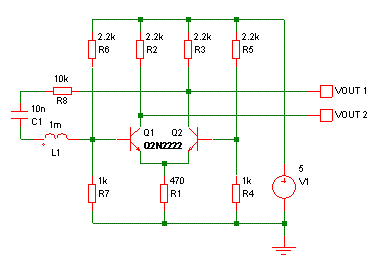
Alternately flashing one of a plurality of sets of high-power lights a chain circuit
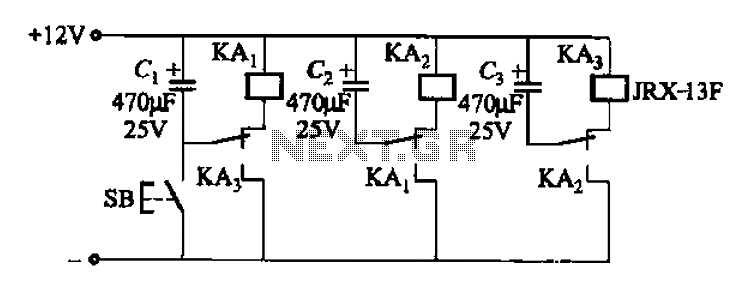
The relay control allows for multiple pairs of contacts to be connected in parallel, enabling the circuit to handle a large lamp power. The design is straightforward; by simply changing the capacitance of the capacitor, different flash frequencies can be achieved.
The described circuit utilizes a relay to control high-power lamps efficiently. The relay acts as a switch that can handle significant current loads, allowing for the operation of large lamps without the need for complex control systems. Each relay can be connected to multiple contacts in parallel, which increases the overall current capacity of the circuit. This feature is particularly useful in applications where high-intensity lighting is required.
The circuit's simplicity lies in its design, where the primary variable component is the capacitor. By adjusting the capacitance value, the timing characteristics of the circuit can be modified. This results in different flash frequencies, which can be tailored to suit specific lighting effects or operational requirements.
In practical terms, the relay is typically activated by a control signal, which could be a manual switch or an automated control system. Once energized, the relay closes its contacts, allowing current to flow to the lamp. The capacitor in the circuit charges and discharges, controlling the timing of the relay's operation and thus the frequency of the lamp's flashing.
To implement this circuit effectively, key parameters such as the relay's contact ratings, the voltage and current specifications of the lamp, and the desired flash frequency should be carefully considered. Additionally, the capacitor's voltage rating must exceed the maximum voltage in the circuit to ensure reliable operation and prevent failure.
Overall, this relay-controlled lamp circuit offers a versatile and efficient solution for applications requiring variable flash rates and high power handling capabilities.As a result of the relay control (several pairs of contacts, if more capacity is connected in parallel), so the lamp power can be large, the circuit is very simple, just change the capacitor capacitance, you can get a different flash frequency.
The described circuit utilizes a relay to control high-power lamps efficiently. The relay acts as a switch that can handle significant current loads, allowing for the operation of large lamps without the need for complex control systems. Each relay can be connected to multiple contacts in parallel, which increases the overall current capacity of the circuit. This feature is particularly useful in applications where high-intensity lighting is required.
The circuit's simplicity lies in its design, where the primary variable component is the capacitor. By adjusting the capacitance value, the timing characteristics of the circuit can be modified. This results in different flash frequencies, which can be tailored to suit specific lighting effects or operational requirements.
In practical terms, the relay is typically activated by a control signal, which could be a manual switch or an automated control system. Once energized, the relay closes its contacts, allowing current to flow to the lamp. The capacitor in the circuit charges and discharges, controlling the timing of the relay's operation and thus the frequency of the lamp's flashing.
To implement this circuit effectively, key parameters such as the relay's contact ratings, the voltage and current specifications of the lamp, and the desired flash frequency should be carefully considered. Additionally, the capacitor's voltage rating must exceed the maximum voltage in the circuit to ensure reliable operation and prevent failure.
Overall, this relay-controlled lamp circuit offers a versatile and efficient solution for applications requiring variable flash rates and high power handling capabilities.As a result of the relay control (several pairs of contacts, if more capacity is connected in parallel), so the lamp power can be large, the circuit is very simple, just change the capacitor capacitance, you can get a different flash frequency.
